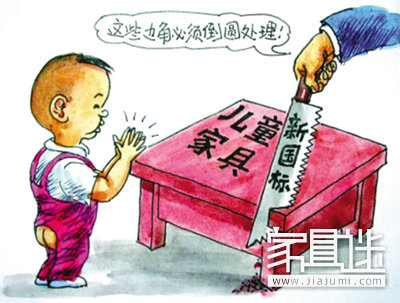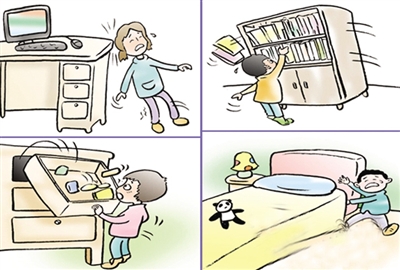On August 1 last year, the General Technical Conditions for Children's Furniture will be officially implemented. This is the first professional furniture standard for children aged 3-14 years. Based on the main technical indicators required by other furniture, the structural safety, harmful substance content and flame retardant properties of children's furniture are based on the characteristics of children. And warning signs have been made more detailed and specific mandatory regulations, and strive to reduce the harm to children in the use of furniture. So how do you choose safe, environmentally friendly and healthy children's furniture based on the basis of the new national standard?

Edge and tip: smooth processing
The product should not be dangerous and sharp edges and dangerous sharp tips. The edges and edges should be rounded or chamfered. The contactable dangerous external angle of the product below the ground level of 1600 mm should be rounded, and the rounding radius should be no less than 10 mm, or the inverted arc length should be no less than 15 mm.
Standard interpretation: pay attention to the edges and the tip, such as tables, chairs, cabinets, drawers or beds, etc., this part is treated with rounded corners or inner corners.

Folding mechanism: prevent extrusion
Except for doors, covers, push-pull parts and their hardware, the product should not produce dangerous extrusion or shear points under normal use loads. If the product has a folding mechanism or bracket, there should be a safety stop or locking device to prevent accidental movement or folding.
Standard interpretation: folding chairs, folding table products, need to be fixed after folding, to prevent sudden damage to children.
Overhang: protect
The product should not have dangerous protrusions. If dangerous protrusions are present, they are protected in a suitable manner.
Standard interpretation: The protrusions of furniture such as handles, bolts and other parts need to be protected to avoid scratching or bumping children.

Flip door, flap: not easy to open, close
The closing force of the flap or flap in the product should be greater than or equal to 8 Newtons.
Standard interpretation: Ensure that the closing force of the door panel is larger and will not be easily opened or closed to prevent children from being injured or pinched.
Holes and gaps: avoid getting stuck
Holes and gaps with a depth of more than 10 mm on the furniture shall have a diameter or clearance of less than 6 mm or more than 12 mm; the gap between movable parts of the product to be contacted shall be less than 5 mm or greater than or equal to 12 mm.
Standard Interpretation: Avoid the danger of children not getting their fingers out of the hole or getting stuck in the drawer.
Enclosed furniture: guaranteed ventilation
When the product has a non-breathable confined space, an effective ventilation opening shall be provided; the furniture shall be placed at any position on the floor, and the vents shall remain unobstructed when resting on two perpendicular faces of 90 corners in the corner of the room. The vents can be fitted with a mesh or similar component that is breathable. Covers, doors and similar devices should not be equipped with automatic locking devices.
Standard interpretation: Furniture with enclosed space must have vents or doors, covers, etc. There must be no locking device to ensure that children can open from the inside.
Jenga is a game of physical and mental skill, players take turns removing one block at a time from a tower constructed of 54 Blocks. Each block removed is then balanced on top of the tower, creating a progressively taller but less stable structure.
Built on the simple premise of stacking blocks, Jenga engages players of all ages, across all cultures. Jenga's success rests on its solid play value. Players take turns to remove a block from a tower and balance it on top, creating a taller and increasingly unstable structure as the game progresses.
A classic Jenga game consists of 54 precision-crafted, specially finished hard wood blocks. To set up the game, use the included loading tray to create the initial tower. Stack all of the blocks in levels of three placed next to each other along their long sides and at a right angle to the previous level.
Once the tower is built, the person who stacked the tower plays first. Moving in the game Jenga consists of:
1) taking one block on a turn from any level of the tower (except the one below an incomplete top level), and
2) placing it on the topmost level in order to complete it.
Players may use only one hand at a time; either hand may be used, but only one hand may touch the tower at any time.
Players may tap a block to find a loose one. Any blocks moved but not played should be replaced, unless doing so would make the tower fall. The turn ends when the next player touches the tower, or after ten seconds, whichever occurs first.
The game ends when the tower falls -- completely or if any block falls from the tower (other than the block a player moves on a turn).
View the pages to know our jenga products. Customized jenga is available in Bescon.
Jenga
Truth or Dare Jenga,Drinking Jenga Game,Outdoor Jenga Game,Building Blocks for Kids
BESCON INDUSTRIAL CO., LIMITED , http://www.besconcn.com